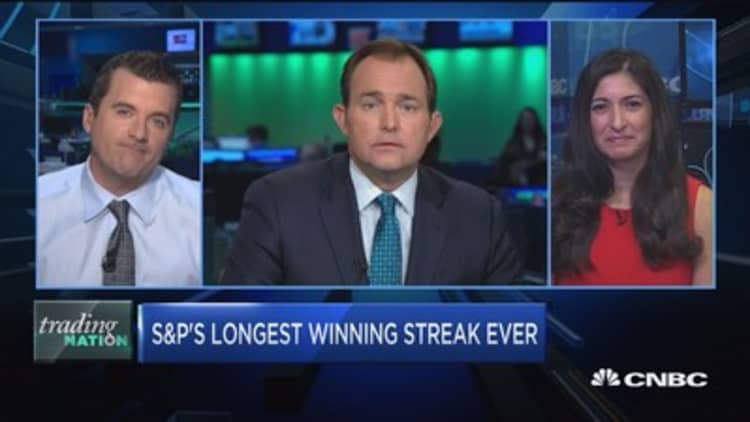
The S&P 500 just posted a historic winning streak, but some market participants are predicting that the long-running bull market could be on its last legs.
According to Ryan Detrick, senior market strategist at LPL Financial, the S&P 500 has now gone 242 trading sessions without a 3 percent pullback — its longest streak ever and topping the previous record of 241 days set in 1995. Since the most recent streak began, the S&P has posted more than 20 percent returns over that period of time.
While the markets could continue to churn higher, Todd Gordon of TradingAnalysis.com warned it could be entering its final few innings.
"We are in the third and final phase [of the classic Dow Theory], which is suggesting through the use of parallel channel that there is room towards 3,000 depending on the angle of ascent," he explained. The Dow Theory refers to three primary phases — accumulation, participation and distribution — which underpin a major market trend.
"I think we're in the distribution phase. That being said, I do see room up towards the top end of this channel, once we start to paint that in up around 3,000," he said Monday on CNBC's "Power Lunch." That's roughly 17 percent higher than where the S&P 500 is trading right now.
However, Gordon added that the lack of volatility has him worried that a pullback is on the way.
"This is the quietest, in terms of a range, stock market on a monthly basis back to as far as 1905," he said. "We're [trading] at about 4.5 percent monthly high to low range, that's the quietest in history."
For Chantico Global CEO Gina Sanchez, the market's complacency has been fed by a drop in key correlations and it could signal trouble ahead for equities.
"You're just diversifying away all risk, meaning the underlying stocks are much riskier than the aggregate looks like," she explained. "[The S&P's] very narrow range [is] being diversified away by these low correlations, and it's lulling people into a severe sense of complacency."
She added that the last time correlations were this low, they preceded the 2001 dot-com bubble that sent the market tumbling.
The S&P set another intra-day record on Monday before closing lower.





